An engineer configured policy-based routing for a destination IP address that does not exist in the routing table. How is the packet treated through the policy for configuring the set ip default next-hop command?
How does an MPLS Layer 3 VPN function?
Refer to the exhibit.

The network administrator must mutually redistribute routes at the Chicago router to the LA and NewYork routers. The configuration of the Chicago router is this:

After the configuration, the LA router receives all the NewYork routes, but NewYork router does not receive any LA routes. Which set of configurations fixes the problem on the Chicago router?
A)

B)

C)

D)

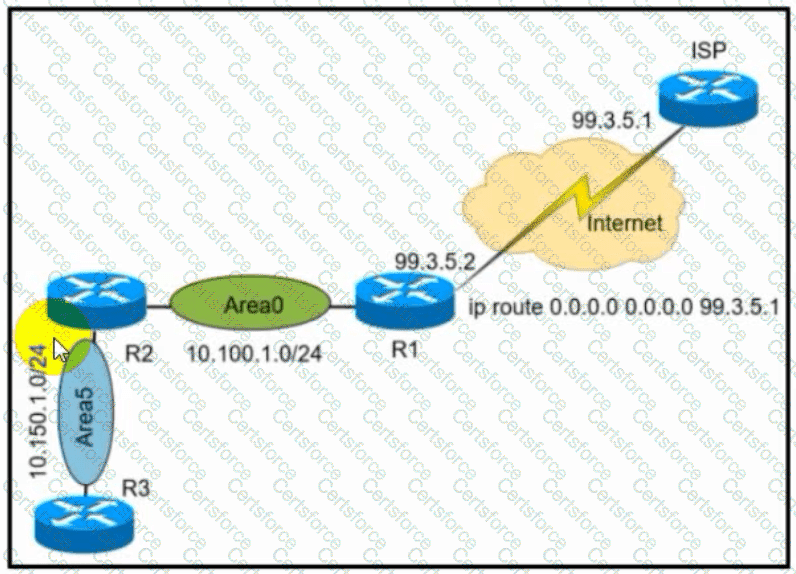
Refer to the exhibit. A network administrator redistributed the default static route into OSPF toward all internal routers to reach to Internet. Which set of commands restores reachability to the Internet by internal routers?
What are two characteristics of IPv6 Source Guard? (Choose two.)
Refer to the exhibit.

A network engineer applied a filter for LSA traffic on OSPFv3 interarea routes on the area 5 ABR to protect advertising the internal routes of area 5 to the business partner network. All other areas should receive the area 5 internal routes. After the respective route filtering configuration is applied on the ABR, area 5 routes are not visible on any of the areas. How must the filter list be applied on the ABR to resolve this issue?
Refer to the exhibit.

Which configuration enables OSPF for area 0 interfaces to adjacency with a neighboring router with the same VRF?
Refer to the exhibit.
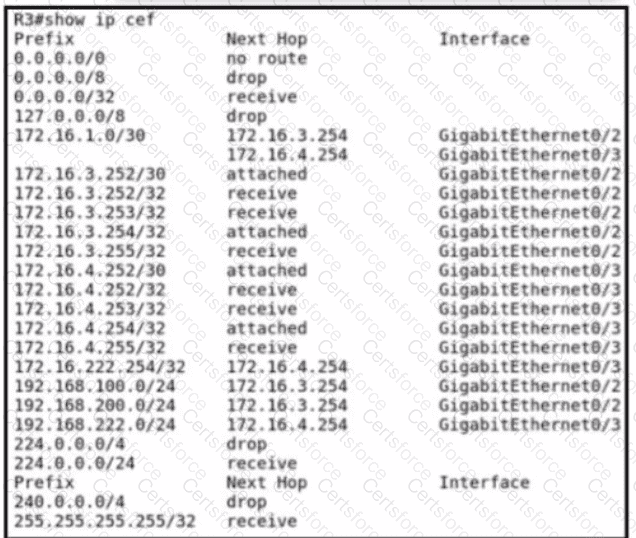
An engineer recently implemented uRPF by configuring the ip verify unicast source reachable-via rx command on interface gi0/3 The engineer noticed right after implementing F that an inbound packet on the giO-3 interface with a source address of 172 16 3 251 was dropped. Which action resolves the issue?
Refer to the exhibit.
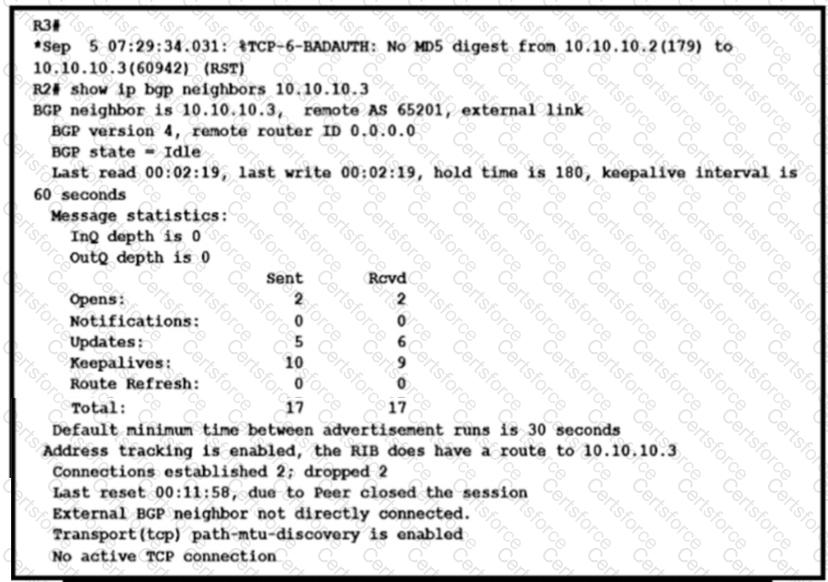
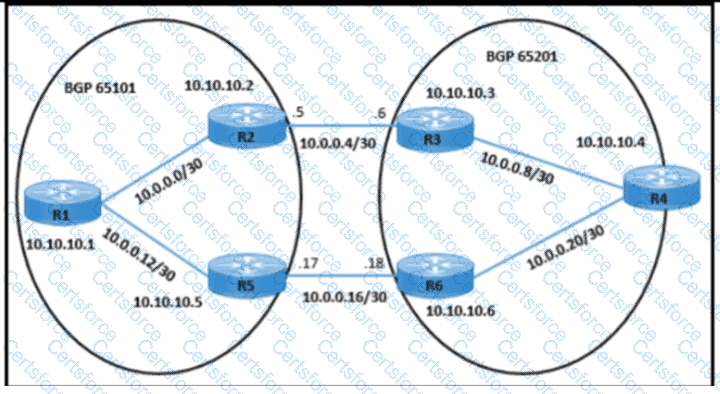
The network operation team observes a traffic forwarding issue between R2 and R3:
Ping and traceroute of loopback IP address from R2 to R3 is successful.
iBGP peering in AS 65101 and AS 65201 is up.
Which configuration resolves the issue?
Refer to the exhibit.

The branch router is configured with a default route toward the internet and has no routes configured for the HQ site that is connected through interface G2/0. The HQ router is fully configured and does not require changes. Which configuration on the branch router makes the intranet website (TCP port 80) available to the branch office users?
A)

B)
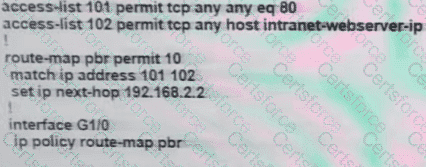
C)
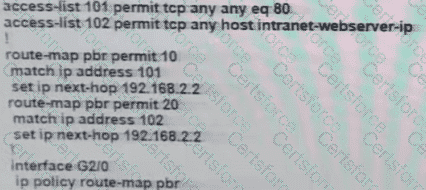
D)

What is the role of LDP in MPLS networks?

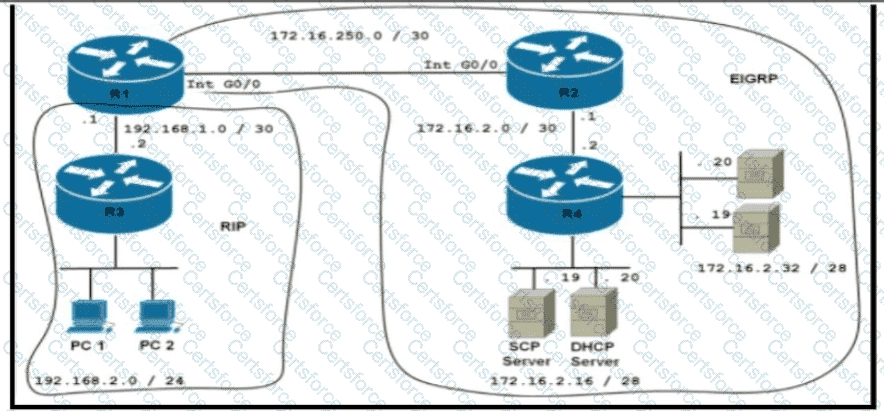
Refer to the exhibit Users from the 192 168.2.0/24 network cannot connect to the 172.16 2 32/28 network Which configuration resolves the issue'?
A)

B)
 C)
C)

D)

The network administrator configured R1 to authenticate Telnet connections based on Cisco ISE using TACACS+. ISE has been configured with an IP address of 192.168.1.5 and with a network device pointing toward R1(192.168.1.1) with a shared secret password of Cisco123.

The administrator cannot authenticate to R1 based on ISE. Which configuration fixes the issue?
Refer to the exhibit.
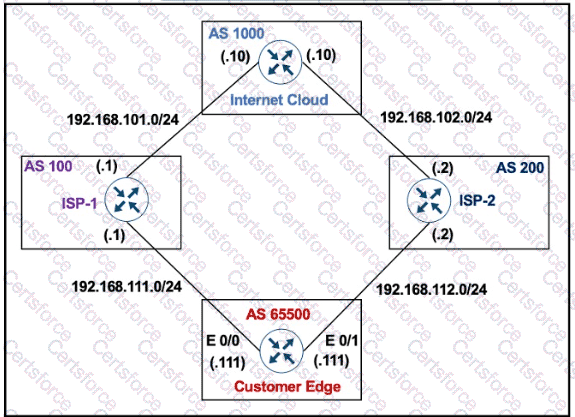
The Customer Edge router (AS 65500) wants to use ASC100 as the preferred ISP for all external routes.

This configuration failed to send routes to AS 100 as the preferred path. Which set of configuration resolves the issue?
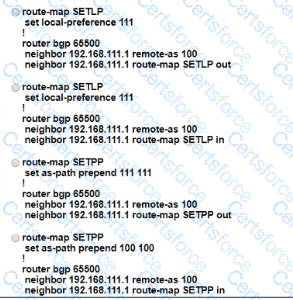

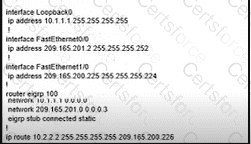
Refer to the exhibit. Not all connected and static routes of router B are received by router A even though EIGRP neighborship is established between the routers. Which configuration resolves the issue?
A)

B)

C)

D)
